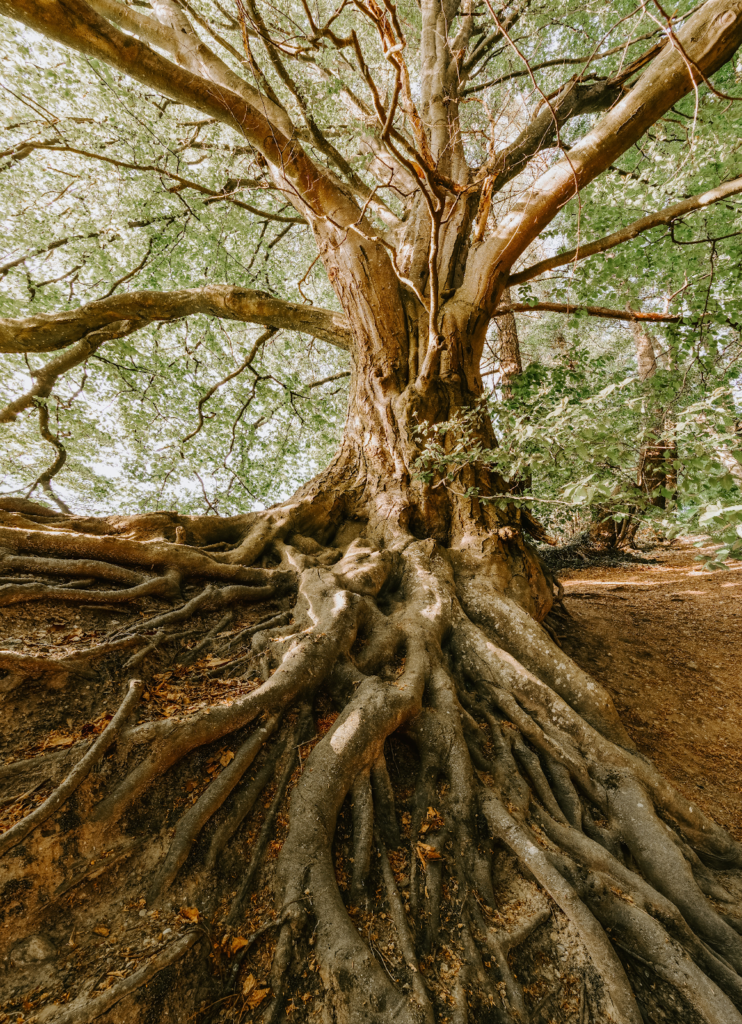by Siena Mantooth
Why do trees grow upwards? How do they know what “up” even is?
Almost every time we set foot outside or glance out the window, we see trees and other plants firmly rooted in the ground, reaching for the sky. Even when a storm has bent a tree over, the tree will still grow towards the sun. How does a tree know that up is up and down is down?
Trees can sense and respond to gravity, which is called gravitropism. Trees and other plants have cells called statocytes that contain particles called statoliths. These statoliths are predominantly composed of starch that “falls” to the bottom of the cell in the direction of gravity. Imagine shaking a snow globe. After you shake the globe, the tiny snowflakes collect, or sediment, at the bottom. If you hold the snow globe horizontally, the snowflakes will fall to the bottom of the glass rather than the globe bottom. A similar process happens with the statolith particles within statocyte cells. Similar to snow globe pieces, statolith “falling” occurs because the statoliths are denser than the cytoplasm, or inner components, of the cell. As a general rule, objects denser than the medium they are in will follow the direction of gravity within that medium. Statocytes detect the location of the fallen statoliths within the cell and recognize this sedimentation as the direction of gravity. This sedimentation sends off a cascade of signaling pathways within the cell, which leads to the reallocation of growth hormones. Consequently, the plant grows in the direction opposed to gravity. Even if the plant tilts only slightly, it still detects the settling of statoliths and grows in the upwards direction.

The hypothesis that signaling pathways respond to position of the statoliths within the cell is known as the position-sensor hypothesis. This hypothesis replaces the previous hypothesis, the force sensor hypothesis, which proposes that statolith weight causes changes in signaling pathways.
The process of growing upward in response to statolith settling is known as negative gravitropism. In contrast, positive gravitropism occurs in roots, which grow downward in response to statolith settling. Gravitropism allows plants to adapt to their environment to promote their survival. For example, positive gravitropism embeds the roots of plants into the soil and allows them to search for key nutrients and water in the ground.
With all that said, scientists can only claim the causal relationship of statoliths and gravitropism as a theory, which has been around for over one hundred years. More research is needed so that we can continue to learn about the budding world in which we live.
